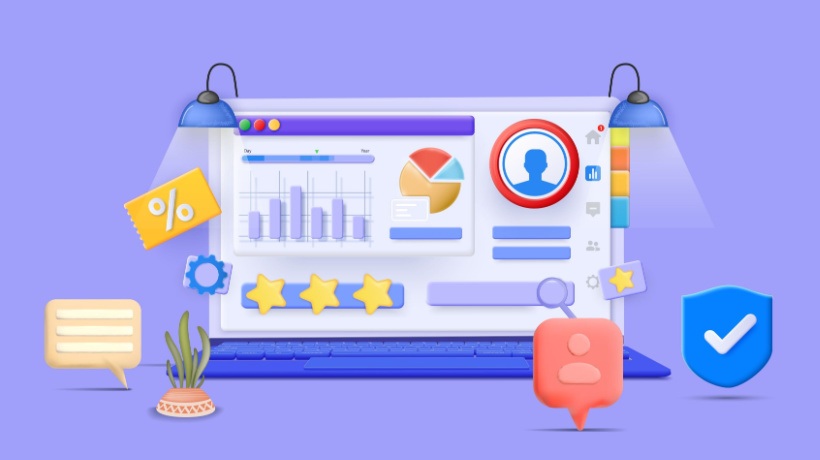Top 2025 Trends In Learning And Development
As we approach 2025, Learning and Development (L&D) is undergoing a significant transition. The proliferation of digital solutions, fueled by a pandemic-driven movement to online and hybrid work, has changed the character of professional development. Personalized learning paths, AI integration, and immersive technology are transforming how people learn and grow in their professions. To remain competitive, firms prioritize continual skill development, making L&D a strategic imperative. From AI-driven adaptive learning to microlearning and Virtual Reality (VR), these developments are more than just buzzwords; they constitute the foundation for tomorrow's workforce. Data analytics is also becoming increasingly important, assisting businesses in tracking learning impact, fine-tuning tactics, and maintaining a competitive advantage. Here's a look at the most important trends altering Learning and Development.
The Evolution Of Learning And Development
Learning and Development is no longer limited to traditional classroom training sessions. In the digital era, Learning and Development has become a complete, flexible discipline fashioned by new technology, data analytics, and continual adaptation to suit the demands of a fast-changing workforce. The shift from structured learning to flexible, on-demand, and hybrid models has transformed training, bringing AI, cloud technologies, and mobile learning into the L&D ecosystem. These improvements are paving the way for 2025, when L&D will be more data-driven, tailored, and impactful than ever before.
8 Top Learning And Development Trends To Watch In 2025
1. Personalized Learning Paths
The "one-size-fits-all" training strategy is no longer relevant. In 2025, individualized learning routes will be at the forefront, providing tailored material that addresses individual skill gaps, job positions, and career objectives. Using AI and data, these personalized routes integrate a variety of formats—videos, simulations, and self-assessments—to increase engagement and retention.
2. AI And ML For Learning And Development
Artificial Intelligence and Machine Learning are rapidly altering the way we learn. AI can detect skill gaps, propose content, and modify learning materials in real time depending on performance. In addition, AI chatbots will serve as virtual learning assistants, delivering rapid feedback and addressing questions, allowing students to proceed uninterrupted.
3. Microlearning For Busy Schedules
Short, bite-sized learning sessions (usually lasting 5–10 minutes) are becoming a popular way for rapid, efficient training. This strategy, known as microlearning, is great for busy professionals who want to study while on the move. Microlearning solutions, with mobile devices and flexible access, enable employees to study at any time and from any location, improving information retention and skill development.
4. Soft-Skills Training For A Human-Centered Workplace
Although automation improves technical abilities, human-centric skills such as communication, problem solving, and emotional intelligence remain vital. As a result, soft-skill training is gaining traction. By 2025, L&D teams will focus on interpersonal and leadership development programs that enable people to flourish in collaborative, dynamic settings.
5. Immersive Learning Using AR/VR
Augmented and Virtual Reality are transforming training by providing immersive, hands-on experiences. VR simulations create genuine environments, allowing trainees to practice skills in a safe setting—ideal for industries such as healthcare, manufacturing, and customer service. AR allows employees to engage with digital material that is overlaid on tangible things, making learning more natural and practical.
6. Learning Decisions Based On Data
Measuring learning outcomes is crucial in the data age. To monitor training efficacy, comprehend learning preferences, and improve programs, L&D teams are utilizing advanced analytics. Businesses can analyze ROI, predict training needs, and clearly illustrate the value of Learning and Development initiatives with the help of data insights.
7. Learning On The Go For A Hybrid Workforce
Mobile-first learning is becoming more and more popular, particularly as remote and hybrid work models gain traction. Mobile systems make learning convenient and ongoing by enabling staff members to access training from any location. Organizations will make significant investments in mobile-responsive platforms by 2025 in order to facilitate learning while on the go.
8. Social And Cooperative Education
Social learning systems let employees work together by promoting information sharing, problem solving, and mutual learning. Peer learning will become commonplace by 2025, and businesses will create networks that allow staff members to interact, share knowledge, and develop as a team. Learning experiences are enhanced and a culture of continual development is fostered by this cooperative approach.
Getting Ready For A Hybrid Workforce In The Future Of L&D
The emerging norm of mixed work presents a special challenge for L&D professionals: how can we make training efficient and available to a distributed workforce? For 2025, digital-first learning solutions hold the key. L&D teams will concentrate on creating mobile-friendly, flexible platforms that function flawlessly on all devices, guaranteeing that all workers, whether they are located in the office or remotely, have equal access to training resources.
Training programs must be more individualized and engaging in order to maintain learners' interest. Today's workers deserve top-notch, on-demand information that accommodates their learning preferences and schedules. In order to adapt, L&D teams need to produce content that is not just flexible and accessible, but also captivating and simple to use.
Conclusion
The field of Learning and Development has a bright future ahead of it. By 2025, the workforce will have access to individualized learning resources, be supported by Artificial Intelligence and data analytics, and be involved in interesting, hands-on training. Businesses that adopt these trends will foster innovation, development, and productivity in addition to improving staff capabilities.
The field of Learning and Development is shifting toward a technology-driven, learner-centric strategy that prioritizes adaptability, involvement, and impact. To stay competitive in a rapidly changing environment, organizations must adapt and embrace these trends, setting the stage for a future where continuous learning is not only encouraged but ingrained in company culture.










